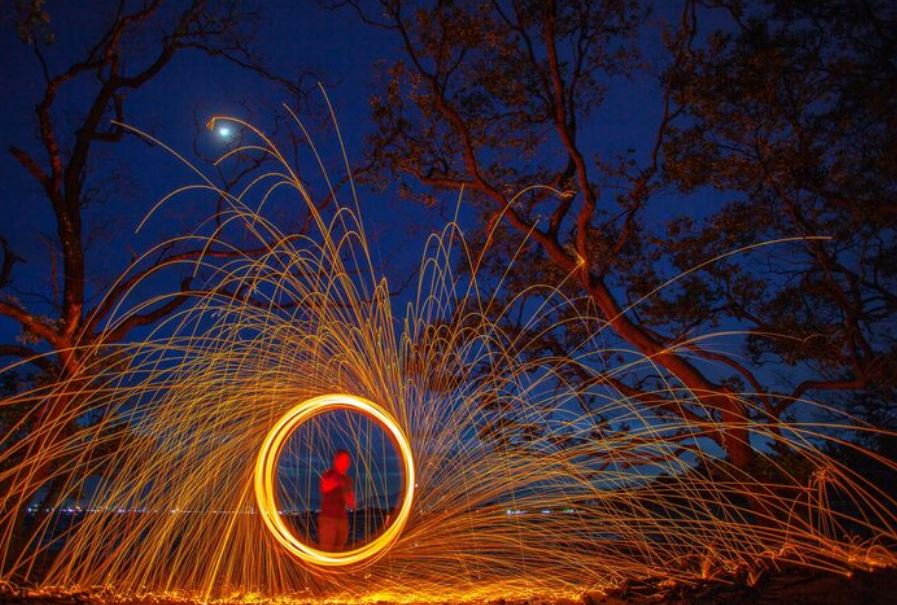
The question of whether Kirlian photography, with its luminous halos and mysterious patterns, records electrical discharges or hidden energies is still up for debate. When Semyon and Valentina Kirlian were experimenting with a patient’s treatment device in 1939, they noticed a shimmer that looked like neon. The real story was what these images meant, but what they found was remarkably effective at creating luminous images.
European researchers had previously experimented with electrography, producing odd hand and leaf imprints under high voltage. However, the Kirlians improved the method by exposing photographic film and positioning objects on electrically charged plates. The findings revealed silhouettes encircled by glowing coronas that remarkably resembled mystical auras or religious halos. By the late 20th century, spiritualists, scientists, and artists all embraced these spectral images, which they interpreted as symbols of invisible vitality.
Key Facts about Kirlian Photography
| Aspect | Details |
|---|---|
| Inventor | Semyon Kirlian (with Valentina Kirlian), Soviet inventor of Armenian descent |
| Year of Discovery | 1939, during hospital experiments with high-frequency electrical devices |
| Technique | Uses high-voltage electrical fields to capture coronal discharges around objects on photographic plates |
| Other Names | Electrography, electrophotography, gas discharge visualization (GDV), electrophotonic imaging |
| Early Influences | Based on 19th-century experiments in electrography by Navrátil, Baraduc, and Jodko-Narkiewicz |
| Popularization | Gained attention in the West in 1970 via Psychic Discoveries Behind the Iron Curtain |
| Uses | Science, parapsychology, alternative medicine, and visual art |
| Claims | Images reveal energy fields or “auras” surrounding living organisms |
| Scientific View | Demonstrates coronal discharges affected by factors like moisture, pressure, and grounding |
| Cultural Impact | Featured in music (George Harrison, David Bowie), film (Psychic Killer), and television (The X-Files) |
The method was well suited to the countercultural quest for alternative truths, Eastern philosophy, and psychic research when it arrived in the United States in the 1970s. In her parapsychology lab at UCLA, Thelma Moss used the technique to create images of plants and fingertips that she said could represent feelings or well-being. However, detractors maintained that surface moisture or conductivity, not magical energy, were the main causes of the variations. The persistent cultural appeal of Kirlian photography stemmed from this conflict between faith and science.
The scientific viewpoint is very clear: a corona discharge is captured by the camera. Depending on how hydrated a leaf is, how hard a finger presses, or how humid the air feels, the glow changes. Once hailed as evidence of a life force, the well-known “phantom leaf effect” can be explained by contamination or residual moisture on plates. No supernatural aura was necessary, as researchers repeatedly demonstrated that cleaning or grounding could significantly reduce changes in the glow.
Nevertheless, there is no denying Kirlian photography’s potent artistic and cultural influence. George Harrison famously combined music and spirituality with a Kirlian image on the cover of his 1973 album. Fascinated by the way the aura seemed to expand after his altered states, David Bowie had Kirlian photographs of a crucifix and his fingertips taken during his exploratory years in Los Angeles. In its opening sequence, The X-Files even featured a Kirlian handprint, using its eerie beauty to allude to mysteries that are beyond the realm of ordinary perception.
Kirlian photography evolved from pseudoscience to an art form for creators like Robert Buelteman. His glowing portraits of flowers demonstrate how inventive the technique can be when utilizing electricity to depict the complexities of nature. These pieces demonstrate that, even without incorporating spiritual interpretations, the beauty of plasma discharges is remarkably evident.
Kirlian photography flourishes in energy healing and alternative medicine despite being scientifically debunked. According to practitioners, the glow presents itself as an energetic mirror of the body, revealing stress, vitality, or illness. Kirlian imaging may be able to visualize the qi believed to flow through all life, according to figures like Beverly Rubik, who linked it to concepts from qigong. Although detractors contend that these claims are unsubstantiated, the continued use of these practices highlights a shared desire to see emotion and health in a concrete way.
Kirlian photography’s cultural persistence demonstrates how people look to symbols for comfort. A poetic metaphor for human energy, resiliency, and fragility can be found in the delicate light that streams from a fingertip. It fulfills a profound desire to make the invisible visible, which makes it feel remarkably adaptable when used in pop culture, art, and healing. The image evokes a sense of something greater, almost spiritual, even though science explains that it is just electricity interacting with moisture.
Digital modifications such as Konstantin Korotkov’s gas discharge visualization (GDV) continue to advance the technique into new fields in the present era. These systems, which combine hardware and software to interpret corona discharges in real time, are marketed as wellness and biofeedback tools. Regardless of whether these gadgets provide actual diagnostic benefits or merely repackage outdated methods, they demonstrate how technology has not lessened interest but rather significantly enhanced it.
In the end, the glow seen in Kirlian photography is a natural electrical effect rather than a paranormal aura. Nevertheless, its influence is strikingly successful in uniting skepticism and belief, science and art. The method serves as a reminder that when exposed to high voltage, even the most commonplace objects—such as a coin, a fingertip, or a leaf—can create remarkable images. That picture turns into a metaphor for how the human imagination turns unprocessed information into tales of vitality, spirit, and life.
The ability of Kirlian photography to inspire people from different fields is especially inventive. It is regarded by scientists as a physics demonstration. It is viewed by artists as a canvas of light. It is seen by believers as evidence of hidden energies. Its legacy is to maintain the mystery rather than to solve it, serving as a reminder that sometimes the pursuit of meaning is just as important as the actual discovery.

